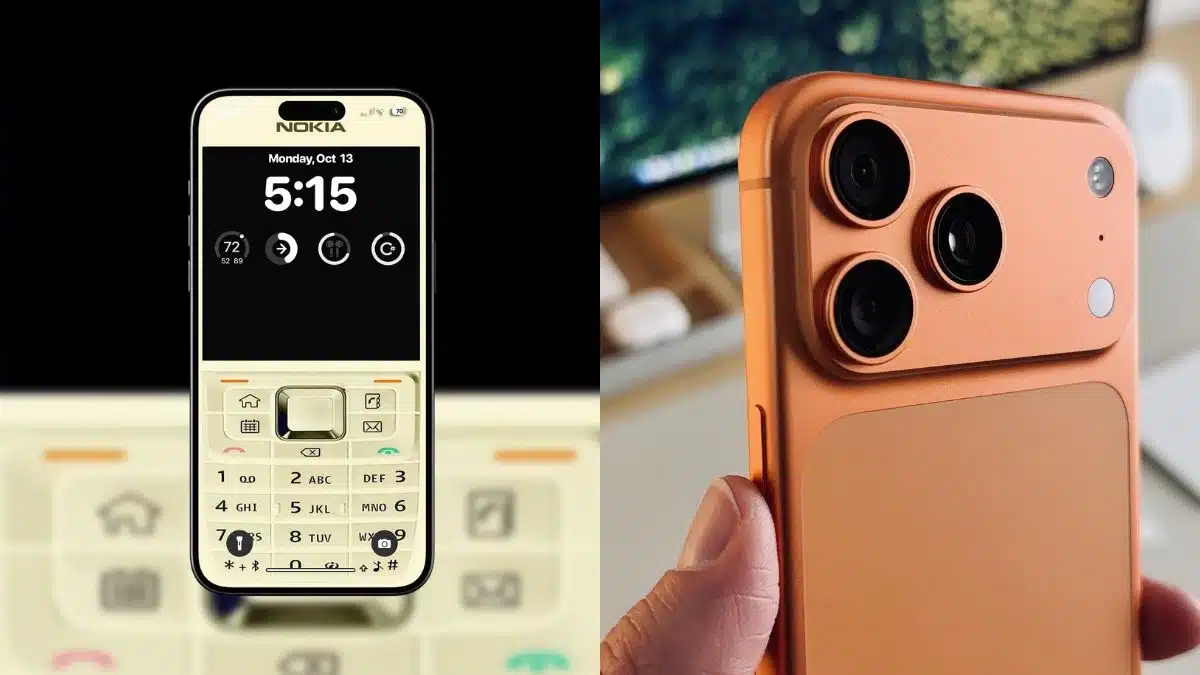From Nokias to Smartphones: 7 Big Ways Mobile Phones Have Changed Over Time
Twenty years ago, a mobile phone was built for one purpose, to call and text. Owning a Nokia 3310 meant durability, long battery life, and simplicity. Phones were small, sturdy, and easy to use, designed to last for years without updates or charging every night.
- From Nokias to Smartphones: 7 Big Ways Mobile Phones Have Changed Over Time
- 1. From Physical Keypads to Touchscreens
- 2. From Basic Cameras to Professional Photography
- 3. From Simple Displays to Advanced Screens
- 4. From Snake to Full Gaming Platforms
- 5. From Limited Connectivity to High-Speed Internet
- 6. From Basic Security to Biometric Protection
- 7. From Durable Bricks to Sleek Glass Designs
- FAQs
Today, smartphones are essential tools that do much more than connect people. They have transformed how we work, communicate, and live. The journey from the humble Nokia era to modern smartphones highlights just how far technology has come in a short time.
1. From Physical Keypads to Touchscreens
The shift from physical keypads to touchscreens changed everything about mobile design. Early devices had buttons for every number and letter, but now smooth glass screens dominate.

The introduction of the iPhone in 2007 started a design revolution, making typing faster and more interactive. Touchscreens also opened the door to gesture controls, swipes, and larger, more immersive displays.
2. From Basic Cameras to Professional Photography
The earliest phone cameras were simple VGA sensors that produced blurry photos. Today’s smartphones rival professional cameras, offering multi-lens setups, night modes, portrait effects, and 4K video.

For many people, a phone has completely replaced the need for a digital camera. Camera quality is now one of the top features buyers consider when choosing a new phone.
3. From Simple Displays to Advanced Screens
In the past, mobile displays showed text in monochrome or limited colours. Modern screens now feature OLED and AMOLED panels with higher resolutions, vibrant colours, and fast refresh rates. These displays not only make media consumption better but also improve visibility in sunlight and enable sleek, bezel-free designs.
4. From Snake to Full Gaming Platforms
Games like Snake and Space Impact were once the peak of mobile entertainment. Now, phones can handle high-graphic games like Call of Duty Mobile and Genshin Impact.

The rise of mobile gaming has created entire industries, with dedicated gaming phones and accessories. It’s a massive leap from casual 2D games to powerful, console-like experiences in your pocket.
5. From Limited Connectivity to High-Speed Internet
Earlier phones depended on 2G or even slower connections, where downloading a small file took minutes. Today’s 5G smartphones provide lightning-fast speeds, video streaming, and instant downloads. The internet is now at the centre of the smartphone experience, enabling video calls, social media, and cloud services on the go.
6. From Basic Security to Biometric Protection
Security has evolved dramatically. Old phones relied on simple PIN codes. Now, smartphones come with fingerprint sensors, facial recognition, and even under-display scanners. Data encryption and privacy settings have become standard, ensuring personal information stays safe in an increasingly digital world.
7. From Durable Bricks to Sleek Glass Designs
Nokia phones were famous for their toughness, they could survive drops that would destroy today’s glass smartphones. Modern phones have traded durability for design and power. Thin frames, curved edges, and larger screens define the modern look, though at the cost of fragility. The shift reflects how phones have become lifestyle symbols as much as communication tools.
From simple communication tools to all-in-one digital devices, mobile phones have evolved faster than any other gadget in modern history. Each upgrade, whether in display, speed, or design, has redefined what people expect from technology. The journey from the Nokia 3310 to the iPhone 16 shows how innovation has shaped not just phones but human connection itself.
FAQs
- When did smartphones first replace basic phones?
Around 2007-2010, with the rise of the iPhone and Android, smartphones became mainstream and started replacing feature phones. - Why were Nokia phones so popular in the early 2000s?
They were durable, affordable, and had long battery life, making them reliable worldwide. - What was the first touchscreen phone?
IBM’s Simon (1994) was the first touchscreen phone, but Apple’s iPhone made the concept popular globally. - How has battery life changed over time?
Older phones lasted days because they had fewer features. Modern phones drain faster due to powerful processors and large displays. - What could be the next big change in smartphones?
Foldable screens, AI-driven experiences, and improved battery technologies are expected to define the next generation of smartphones.
Also Read- MP3 players making a comeback? Top 4 MP3 Players In the Market Today











